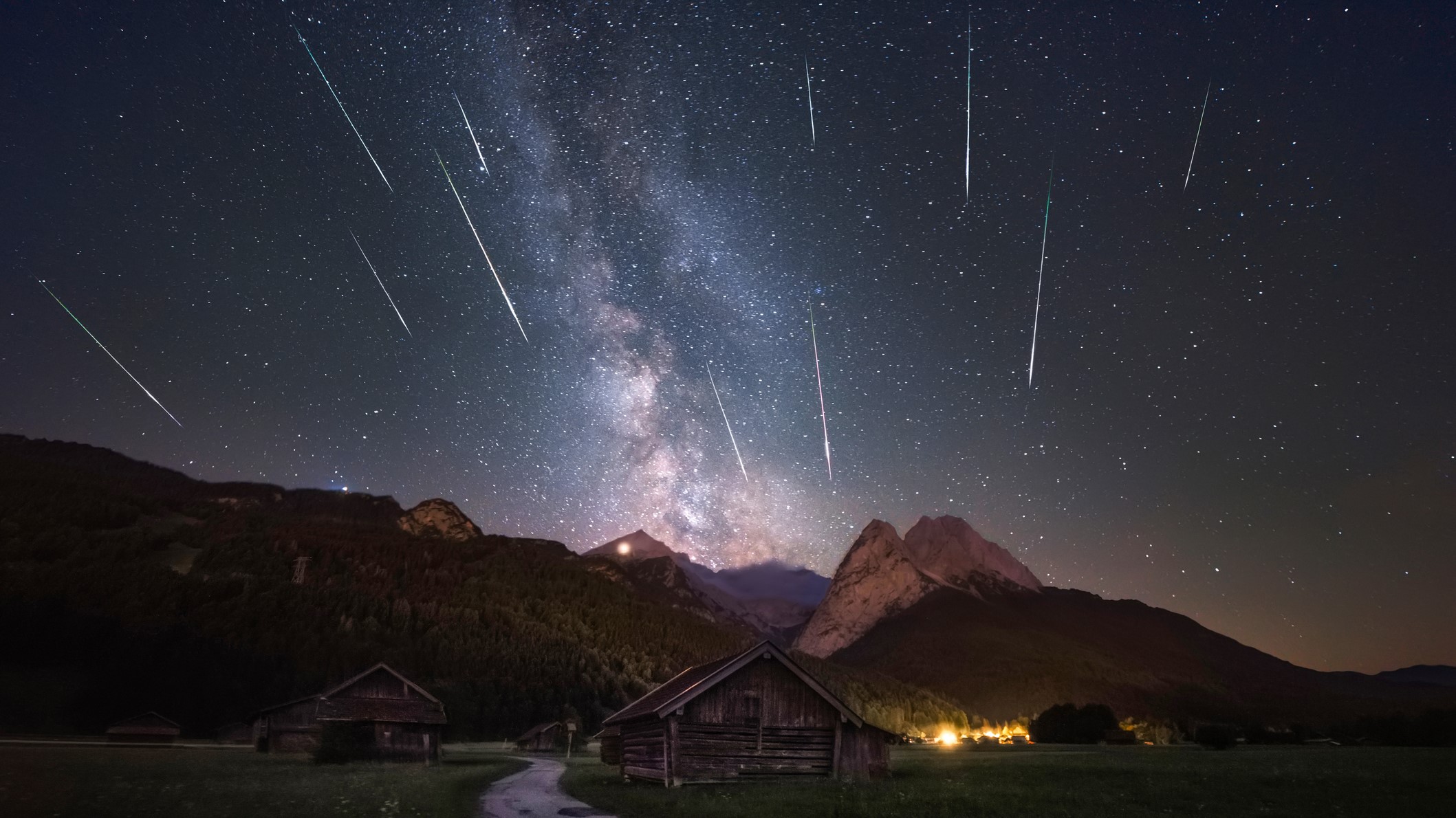The Perseid meteor shower (also known as The Perseids ) is perhaps the most popular meteor shower of the year, visible between July and August. With clear skies, you could see what some consider the most spectacular cosmic light show. American spectators can expect to see the greatest number of meteors during the shower's peak between Aug.
11-12 this year, according to the American Meteor Society (AMS) (opens in new tab) . Though, the 2022 Perseids won’t be quite as spectacular as they were in 2021, due to the full moon illuminating the sky. — When : July 14 to August 24 — Peak: Aug.
11-12 — Comet of origin: 109P/Swift-Tuttle — Zenithal Hourly Rate (ZHR): 100 (The number of meteors a single observer would see in an hour of peak activity with a clear, dark sky and the radiant at the zenith). Every year, Earth passes through the path of Comet Swift-Tuttle from July 17 to Aug. 24, with the shower's peak — when Earth passes through the densest, dustiest area — occurring Aug.
11-12. That means you'll see the most meteors in the shortest amount of time near that time. Years without moonlight see higher rates of meteors per hour, and in outburst years (such as in 2016) the rate can be between 150-200 meteors an hour.
Related: Meteor shower guide 2022: Dates and viewing advice If you take a cool photo of the 2022 Perseid meteor shower let us know! You can send images and comments to spacephotos@space. com . On a more normal year you can expect to see up to 100 meteors per hour at the shower's peak, according to NASA (opens in new tab) .
Last year, the moon was just a thin crescent and didn't obscure the view of the meteor shower too badly, but the moon's glow is a continuing concern for skywatchers looking for a clear view. Even though the Perseids are especially bright, moonlight can make viewing a bit tricky. This year, the peak of the Perseids will be affected by the full moon illuminating the sky.
This beloved, annual sky spectacle is caused by the comet Swift-Tuttle. Comet Swift-Tuttle is the largest object known to repeatedly pass by Earth; its nucleus is about 16 miles (26 kilometers) wide. It last passed near Earth during its orbit around the sun in 1992, and the next time will be in 2126.
But it won't be forgotten in the meantime, because Earth passes through the dust and debris it leaves behind every year. When you sit back to watch a meteor shower, you're actually seeing the pieces of comet debris heat up as they enter the atmosphere and burn up in a bright burst of light, streaking a vivid path across the sky as they travel at 37 miles (59 kilometers) per second, according to NASA. You can see the Perseid meteor shower best in the Northern Hemisphere and down to the mid-southern latitudes, and all you need to catch the show is darkness, somewhere comfortable to sit and a bit of patience.
To find the Perseid meteor shower, it's a good idea to look for the point in the sky where they appear to originate from, this is known as the radiant. According to NASA, the Perseids' radiant is in the Perseus Constellation . Though Perseus isn't the easiest to find, it conveniently follows the brighter and more distinctive constellation Cassiopeia across the night sky.
The meteor shower gets its name from the constellation it radiates from, the constellation is not the source of the meteors. — 6 meteor showers will likely offer better views than the Perseids this summer — 10 wild Perseid meteor shower facts — Best stargazing tents: keep warm and dry when skywatching To best see the Perseids, go to the darkest possible location and lean back and relax. You don't need any telescopes or binoculars as the secret is to take in as much sky as possible and allow about 30 minutes for your eyes to adjust to the dark.
If you want more advice on how to photograph the Persied meteor shower, check out our how to photograph meteors and meteor showers guide and if you need imaging gear, consider our best cameras for astrophotography and best lenses for astrophotography . The best time to look for meteors is in the pre-dawn hours. The meteors will peak between August 11-12, according to AMS.
According to NASA, the Persieds will be active from July 14 to August 24. The peak viewing days are typically your best shot to see the sky speckled with bright meteors. To see the meteors, look up and to the north.
Those in southern latitudes can look toward the northeast to see more meteors. Skywatchers looking out for the Perseids might also be treated to some stray meteors from the southern delta Aquariid meteor shower which peaks in late July, according to AMS. Though the southern delta Aquariids are best viewed from the Southern Hemisphere, they can sometimes be visible to those in the mid-latitudes in the Northern Hemisphere.
If you're interested in learning more about Comet Swift-Tuttle check out this interesting informative image entry by ESA (opens in new tab) . The National Schools Observatory (opens in new tab) provides a great overview of meteor showers and how to plan your meteor spotting. If you're looking for a nice kid-friendly introduction to meteor showers, NASA has got you covered (opens in new tab) .
Follow us on Twitter @Spacedotcom (opens in new tab) and on Facebook (opens in new tab) . .

